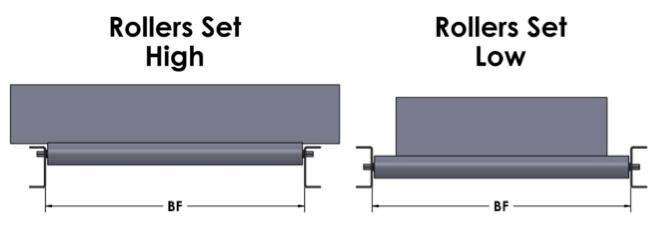How To Select a Gravity Conveyor Roller
27th September 2018
Gravity roller conveyors are used to transport loads such as bags, cartons, totes, skids, etc. Primarily, gravity conveyors are used in shipping departments, stocking areas, assembling lines, warehouses, and distribution centers. Gravity Conveyor Roller are economical and require little maintenance. There are many sizes and configurations available.

The first thing to determine is the size and weight of the smallest and largest package that the conveyor unit will need to transport. With this information, the following requirements can be determined: spacing between individual rollers, roller diameter, between frame width, the type of frame to be used, and floor supports.
Normally, there should always be a minimum of three conveyor rollers in contact with the load at all times. Having the axle centers (the distance between two roller centers) close together will help keep the packages from rocking back and forth. Axle centers may need to be reduced even further in order to reduce the load on each individual roller.
The roller diameter and axle size is determined by the load the rollers need to support. Smaller diameter rollers are less expensive than larger rollers but will support less weight. Heavier loads will require larger diameter rollers and axles. Loading conditions will also influence the gauge or wall thickness of the tubing used. If the conveyors are going to be loaded by a fork lift, or have items dropped onto them, heavier gauge tubing may be required.
The between frame width (BF) of the conveyor is the distance between the two conveyor rails measured from the inside. The BF is determined by adding 2” to the width of the largest package that needs to be transported. There are however other considerations when specifying the BF. If the rollers are set high in the frame (roller surface above the frame), packages can overhang the conveyor rails as long as they remain stable and will not collide with any external objects. If the rollers are set low in the frame (roller surface below the frame), then the frame will act as a guard deterring the packages from falling off of the conveyor. When specifying set low, the BF should allow for at least 1” of clearance on each side of the largest conveyed item.


The conveyor frames may be steel or aluminum. Aluminum frames will be significantly lighter and easier to set-up/break-down, but will support less weight than a comparable steel frame. Steel frames are usually less expensive and more durable than aluminum frames. The frame must be capable of supporting both the conveyed items and the weight of the conveyor itself. Frame capacities are provided for 5’ and 10’ support centers. If the frame capacity is not enough to support the required load, a larger frame or more supports will be required.
The weight of the conveyed items and the weight of the conveyor also must be considered when selecting floor supports. The nominal height of the support is from the floor to the underside of the conveyor frame. Most supports have adjustable heights. Either H-stand supports (permanent installation) or tripods (temporary set-up for light duty conveyors) may be selected. There should be at least two supports under a 10’ section but more may be added to increase capacity.
In summary, gravity roller conveyors are a great choice for areas that need to move loads and packages. Many sizes and configurations are available, so it is important to consider the following information before making a selection:
Size and weight of the smallest and largest item
Axle Centers – Have at least three rollers in contact with the load at all times
Roller Diameter – Heavier loads require larger diameter rollers and axles
Between Frame Width – Determined by the largest package and the presence of curves
Type of Frame – Aluminum for lightweight maneuverability, steel for strength
Floor Supports – Tripods for temporary set-up, H-Stands for permanent installation

